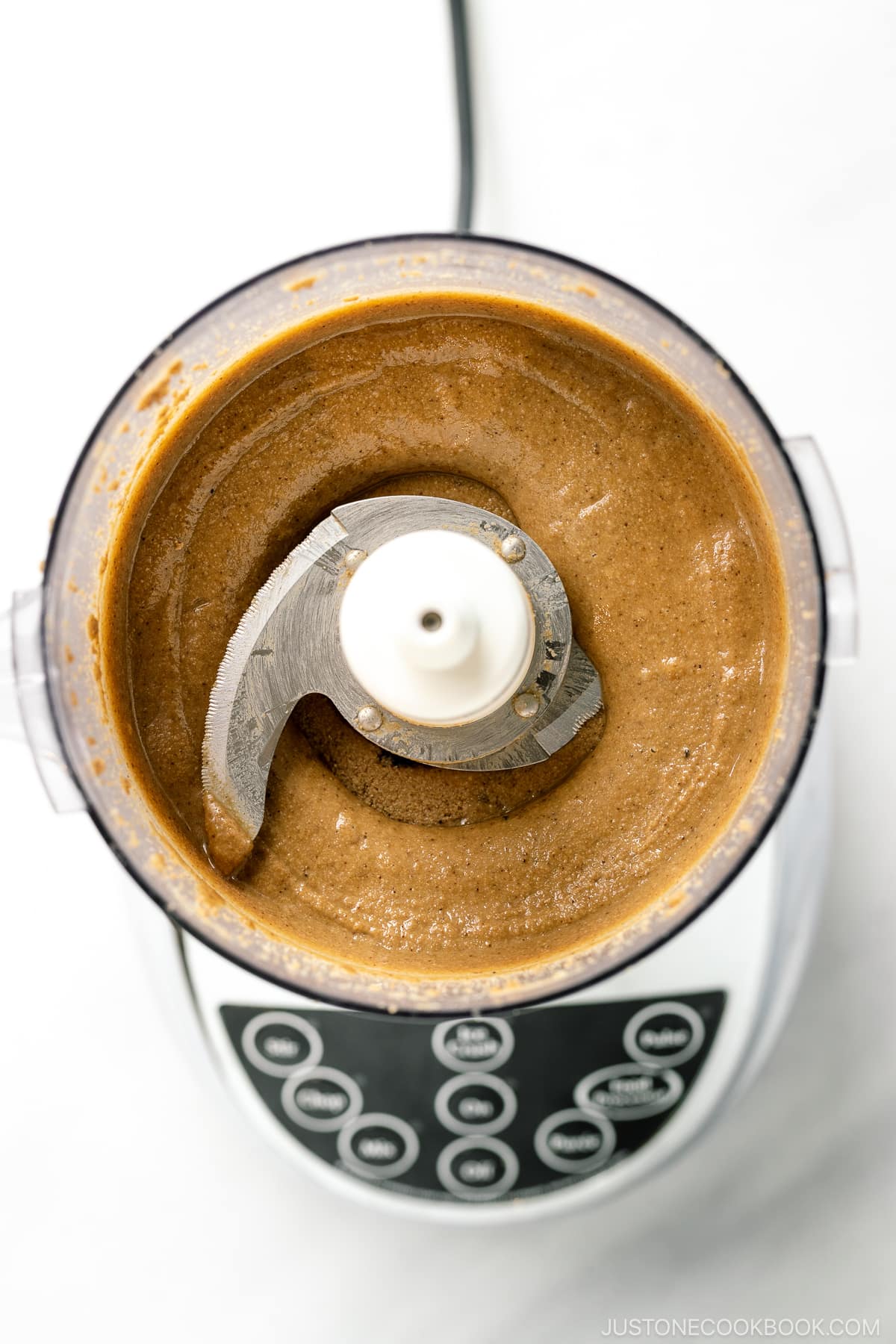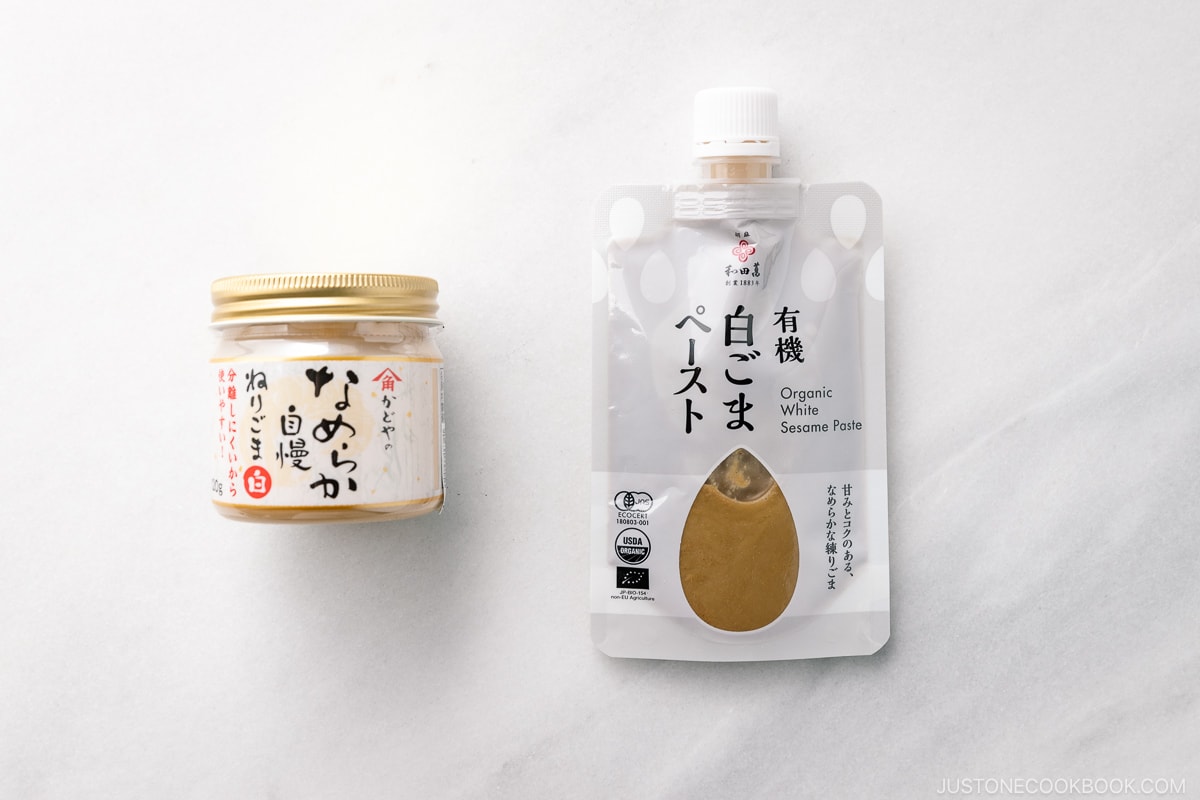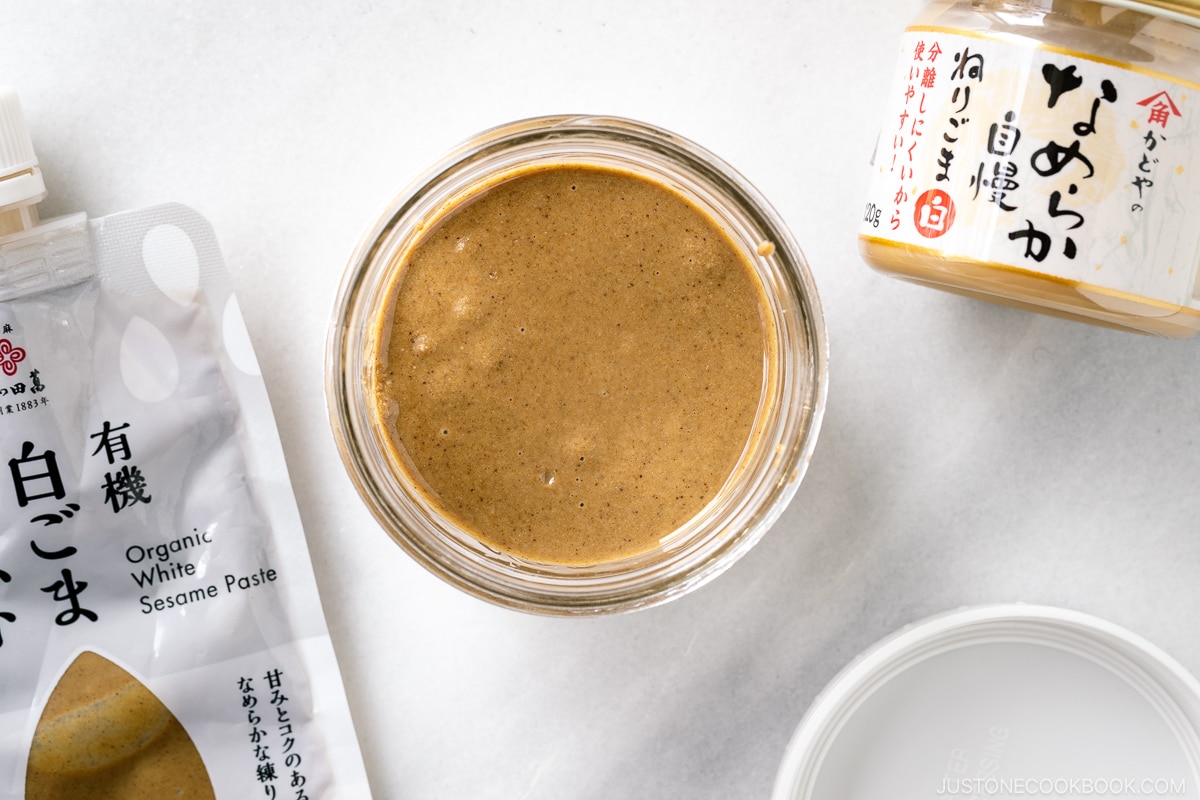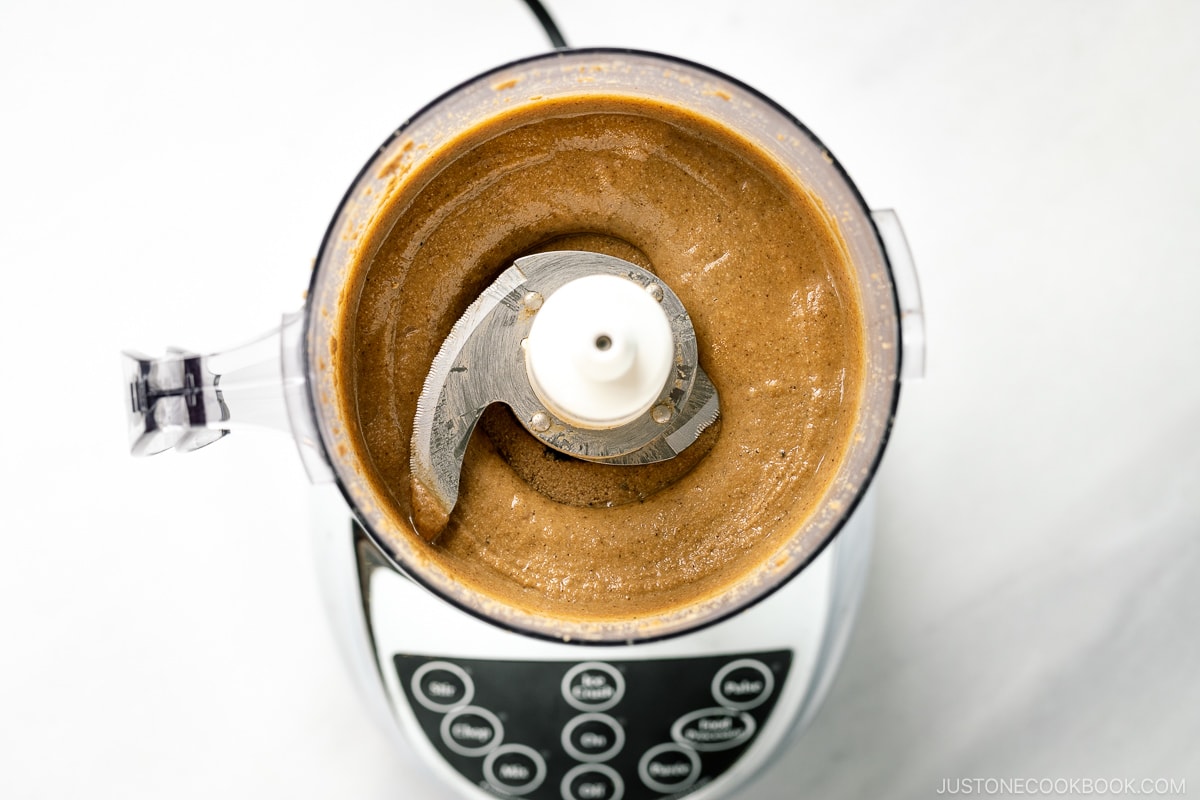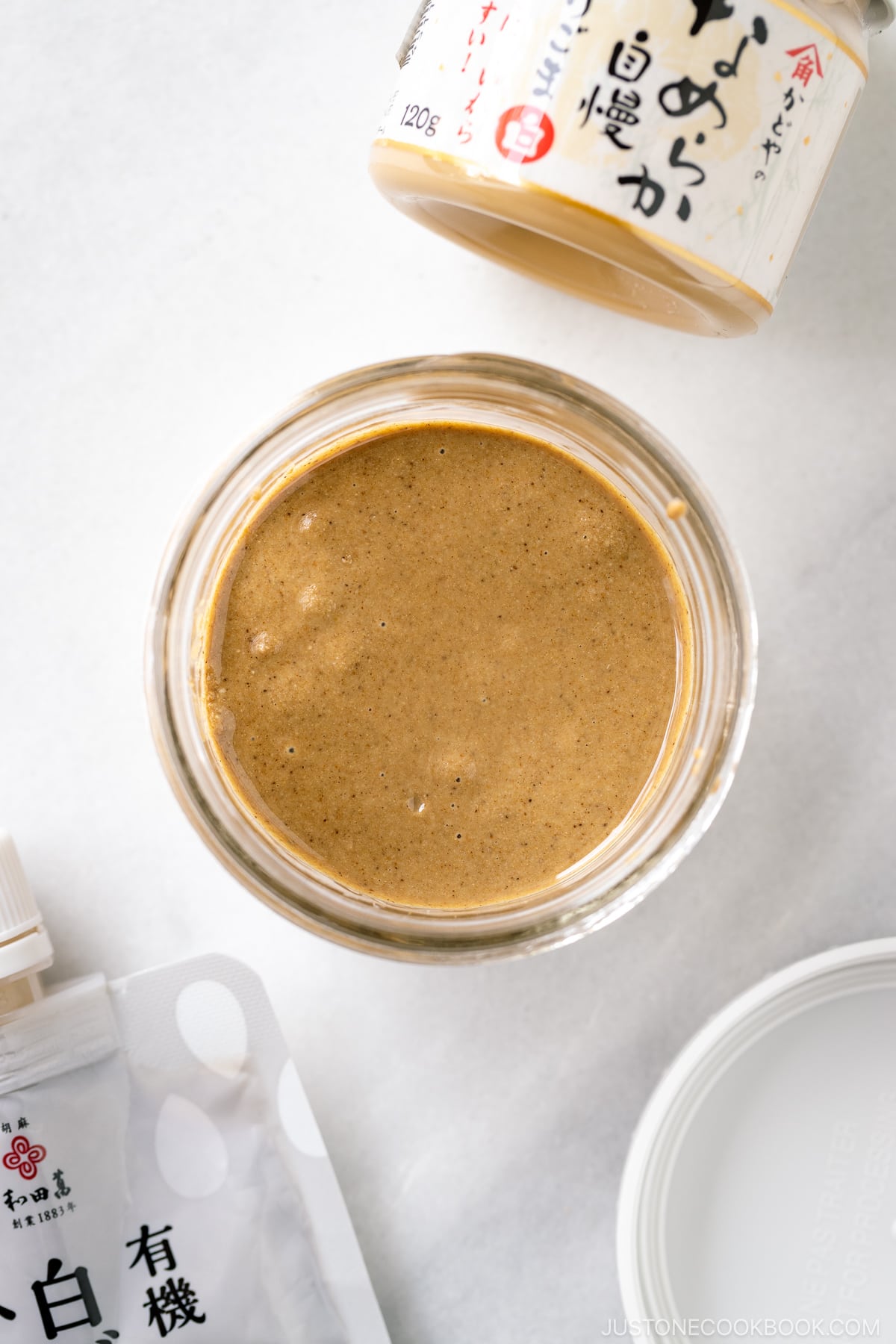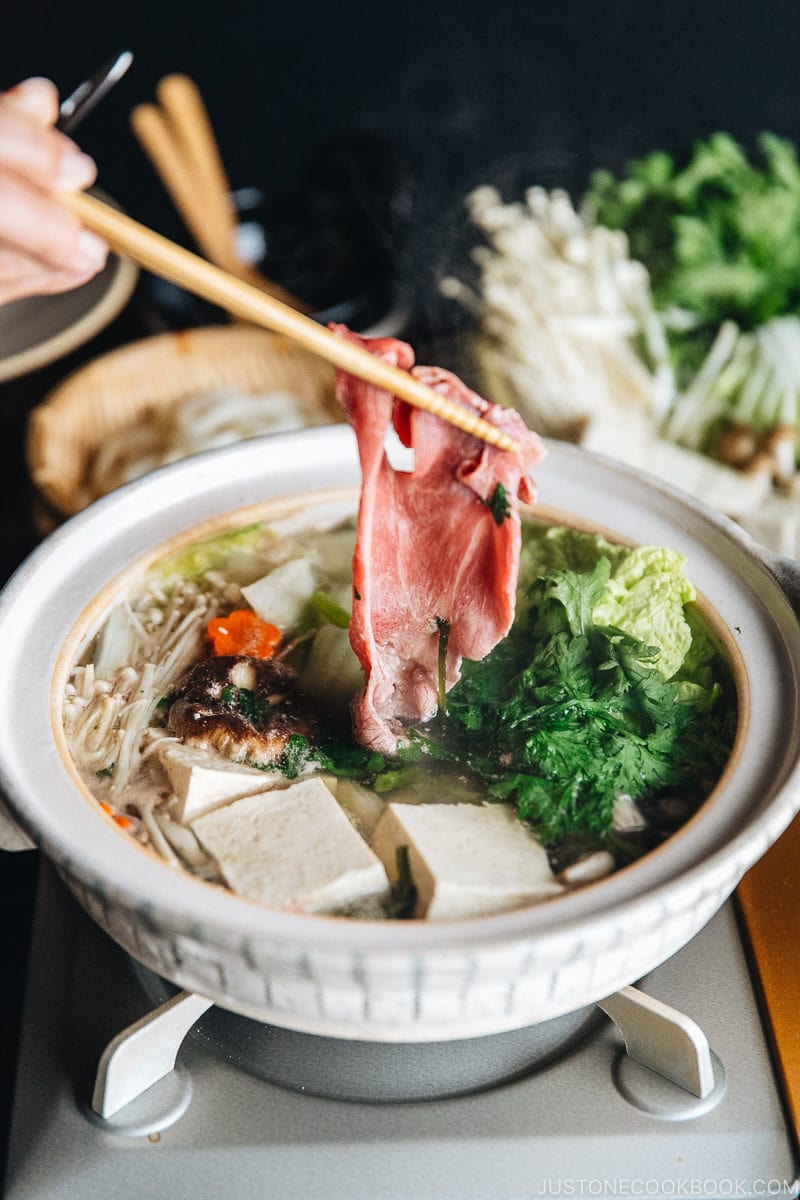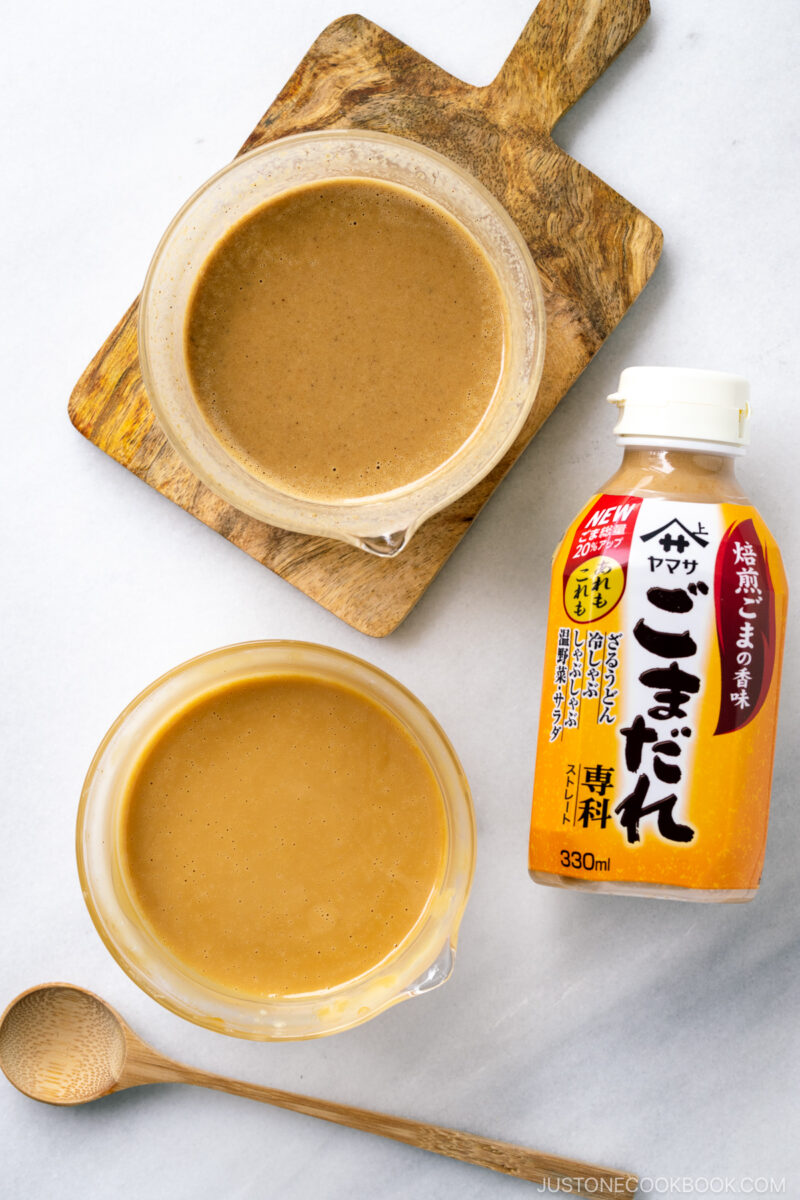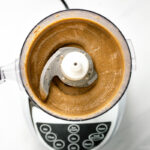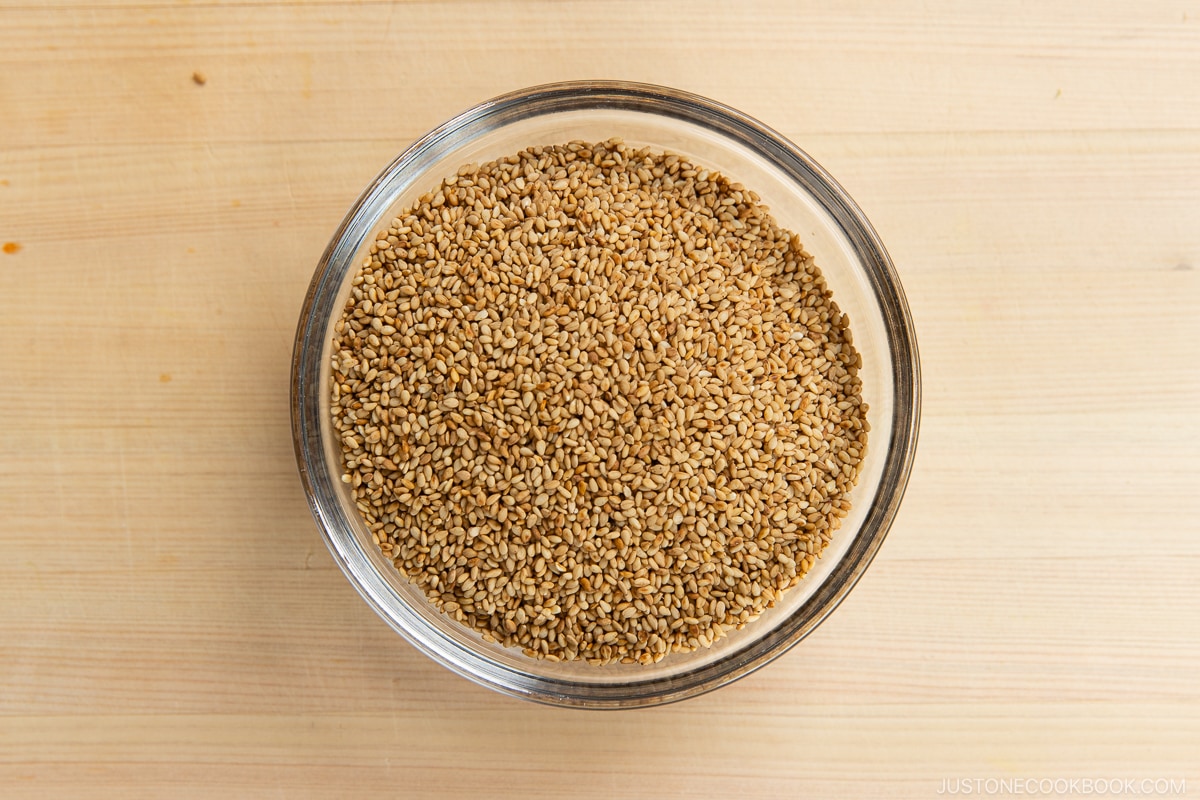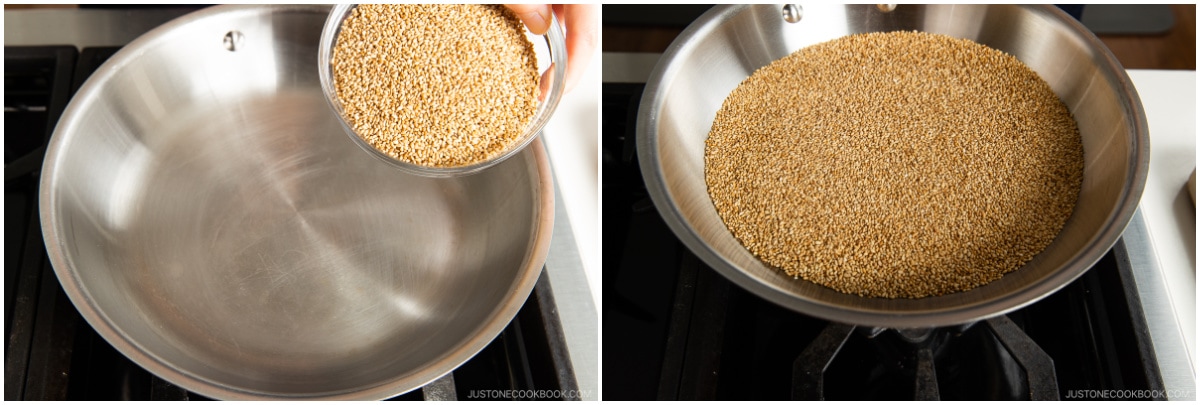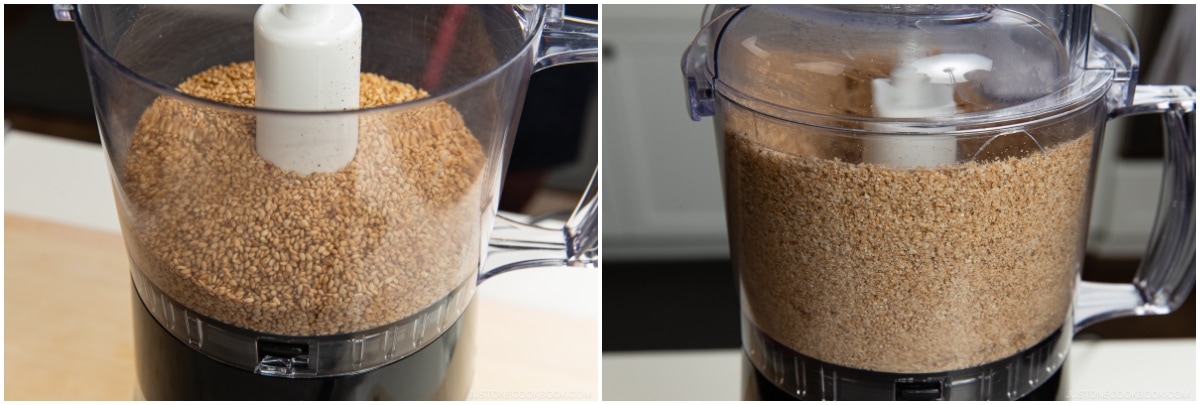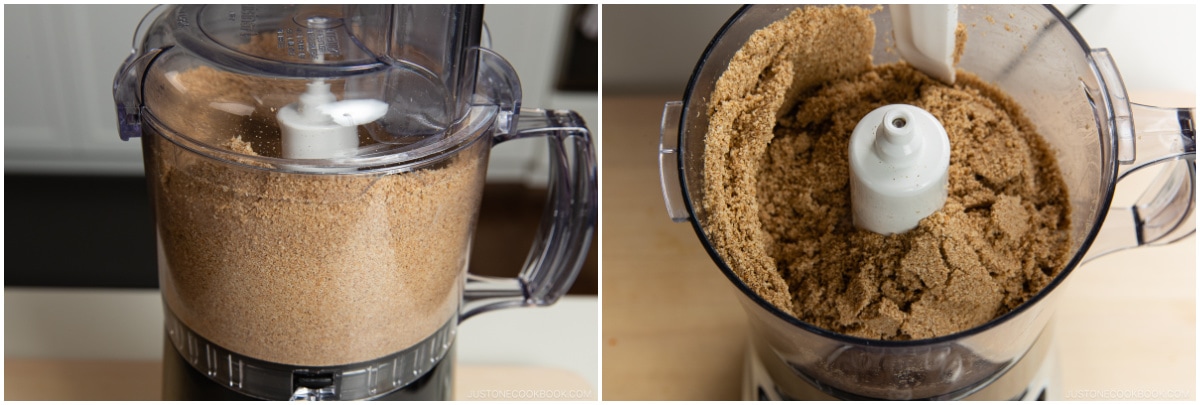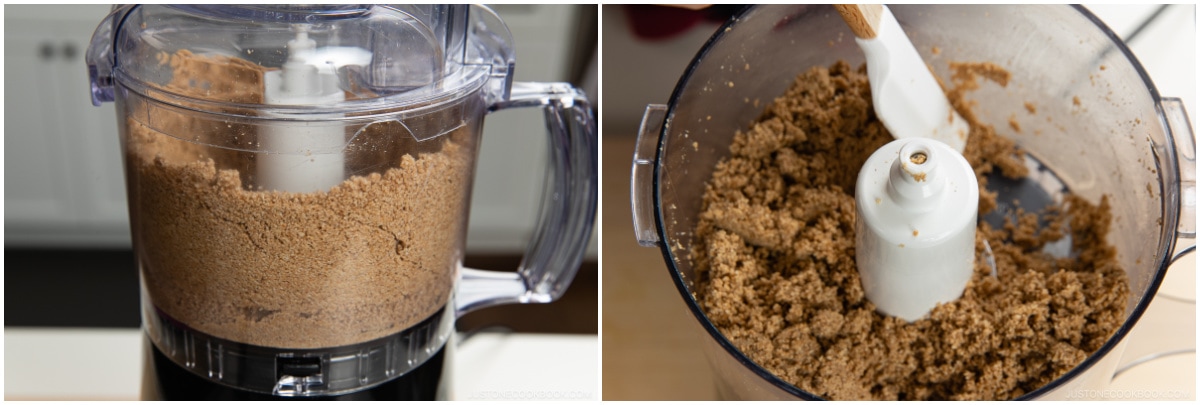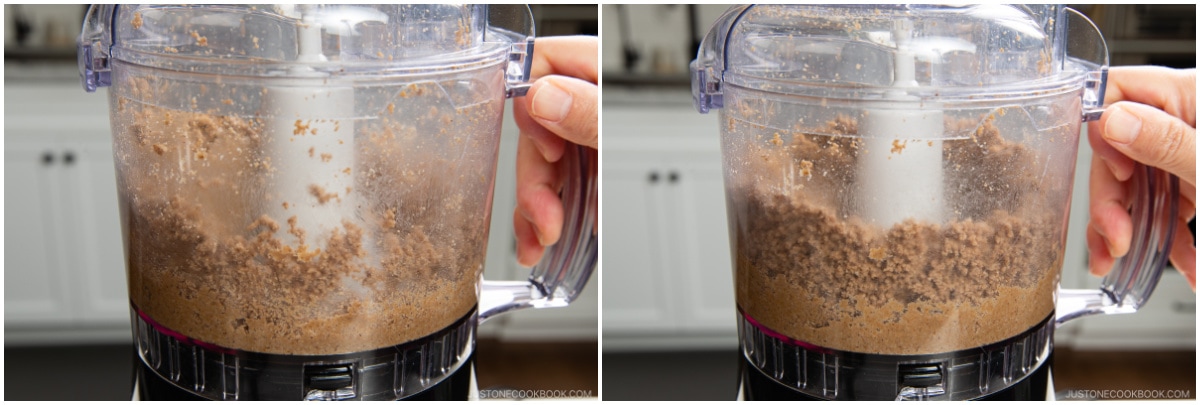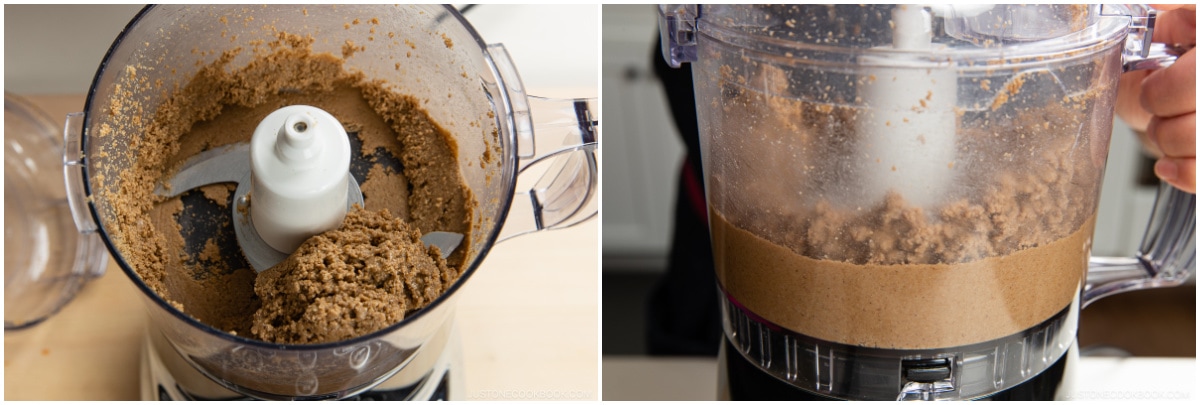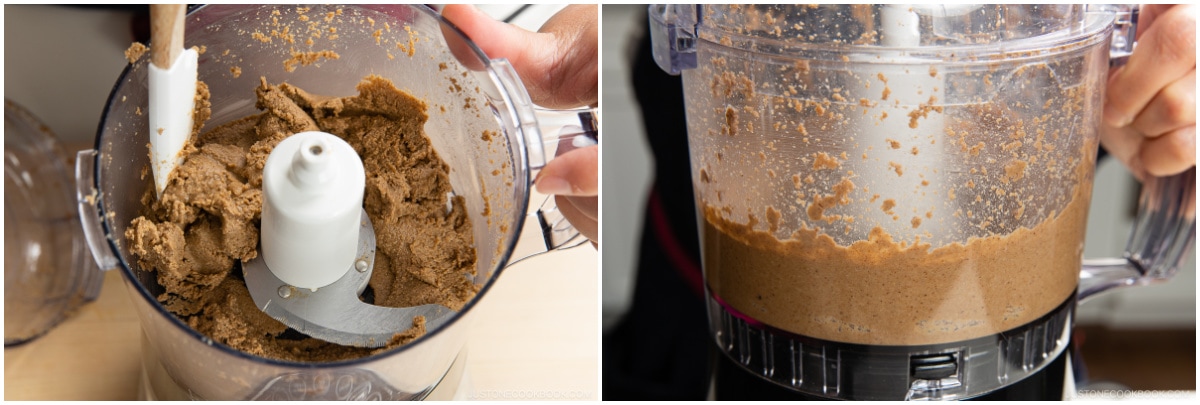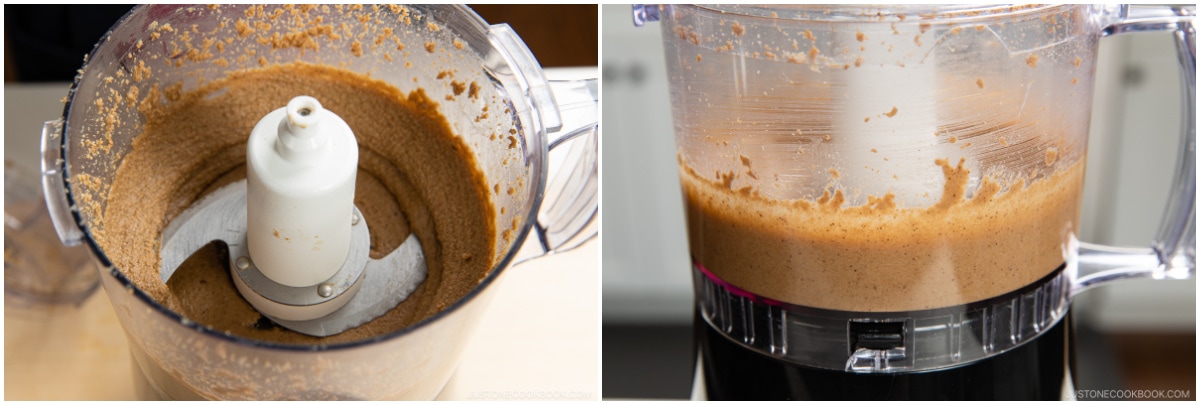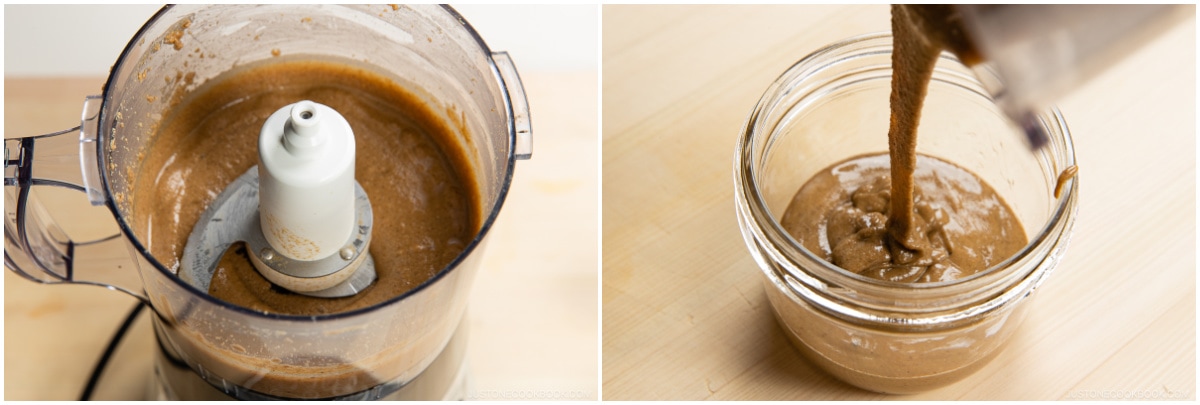Neri Goma (練り胡麻, ねりごま) is a Japanese sesame paste made by grinding whole toasted white sesame seeds into a paste. It is rich, creamy, and flavorful, with a similar consistency to nut butter like peanut butter. The Japanese use sesame paste in both savory and sweet dishes. I love that it’s simple to make, and if you are vegan or gluten-free, neri goma makes a great addition to bring flavors and proteins to your food. In this recipe, we will explain everything you need to know about this versatile condiment and show you how to make White Sesame Paste at home. If you want to make Black Sesame Paste, click here.
What is Sesame Paste (Neri Goma)?
Japanese sesame paste is called neri goma (練り胡麻, ねりごま). “Neri” means kneading, and “goma” means sesame seeds. The smooth paste is made by grinding the toasted sesame seeds. The grinding process allows the seeds to break down and produce an aromatic and flavorful puree that has a very thick consistency. Sesame is said to have been brought to Japan during the Jomon period (13000 BC to 300 BC; the earliest historical era of Japanese history). Since then, it has played an important role in Japanese cuisine. Sesame seeds are often classified into three categories: Black (黒胡麻), white (白胡麻), and golden (金の胡麻), and you can find sesame paste for each type.
Where to Find Sesame Paste
For authentic Japanese cooking, I highly recommend using Japanese sesame paste (neri goma) by making your own.
Ingredients for Homemade Sesame Paste
Toasted white sesame seeds
That’s it! Just 100% sesame seeds are all you need. You can also use untoasted sesame seeds, but you will need to toast the sesame seeds longer than the time I provided in my recipe. You will need a food processor or a high-powered blender (I use a 3-cup food processor). If you use a bigger food processor or blender, you will need to double or triple the sesame seeds amount, or your food processor won’t make sesame seeds into a thick paste form. See the details on the step below.
How to Make the Best Sesame Paste
Recipe Tips for Making White Sesame Paste
1 cup of sesame seeds yields ⅓ cup of sesame paste. Don’t reduce the amount of sesame seeds. You need enough sesame seeds to get picked up to make into a paste form. Toast the sesame seeds. Even when the sesame seeds already come toasted, the extra step of toasting them in the pan will help bring out a nice aroma. Just be careful not to burn them. Scrape down the sides with a silicone spatula whenever the blades just spin without engaging the seeds. Take a break if the motor of your food processor is getting too hot. My food processor didn’t have any issues, but you might want to give the machine a short break if your food processor has a weaker motor. It can be too much to handle 10-15 minutes of continuous food processing. Add a little bit of sesame oil, but only if your food processor is struggling. Sesame seeds themselves contain oil that is naturally released during toasting and grinding, so it’s usually enough to create a thick sesame paste. However, if your food processor is struggling to crush and grind, you can drizzle a little bit of sesame oil onto the seeds to add volume, help bind them, and thin out the paste.
How to Store Homemade Sesame Paste
You can store this homemade sesame paste in the refrigerator for up to a month and in the freezer for half a year. Bring the paste back to room temperature before using it. It’s important to keep the sesame paste out of sunlight as it can go rancid easily.
How to Use Sesame Paste in Japanese Cooking
Thanks to its nutty flavor, sesame paste makes a wonderful addition to various dishes, ranging from main dishes to desserts. In Japanese cooking, sesame paste is the key ingredient to make Goma Dare (Sesame Sauce), which is a creamy dipping sauce for Shabu Shabu, a popular Japanese hot pot. We use goma dare for dipping meat, vegetables, and cold noodle dishes such as sesame noodles. We also use sesame paste to make noodle sauces, salad dressings, and drizzle on top of desserts such as steamed cake, pudding, and ice cream. Wish to learn more about Japanese cooking? Sign up for our free newsletter to receive cooking tips & recipe updates! And stay in touch with me on Facebook, Pinterest, YouTube, and Instagram.
